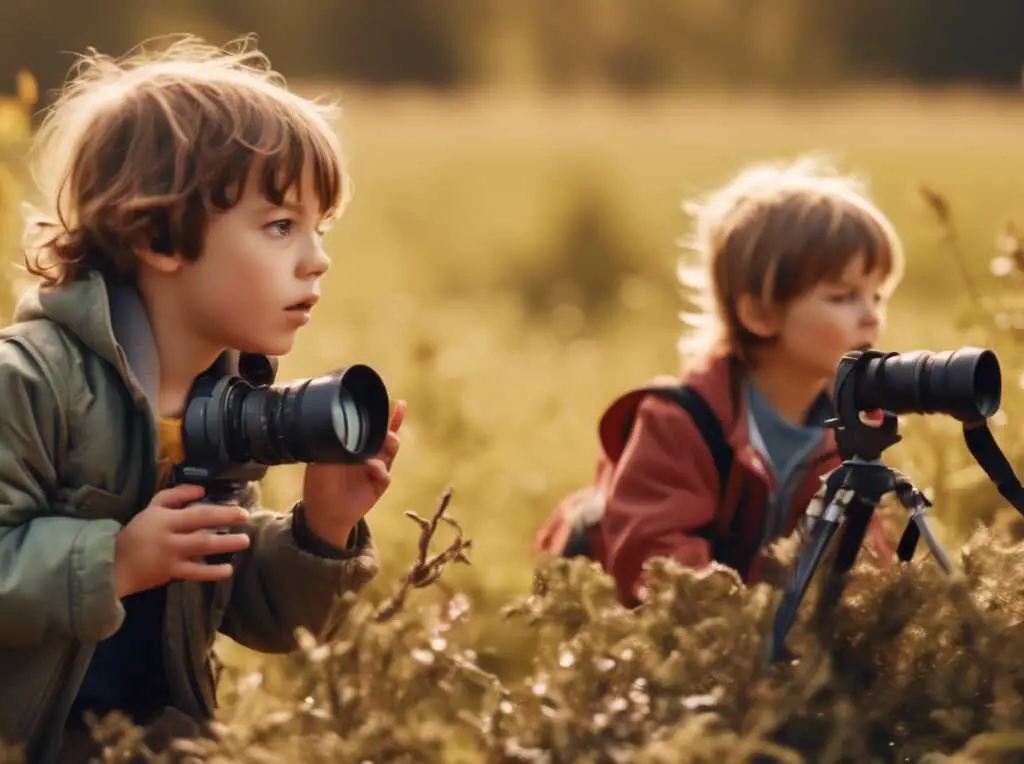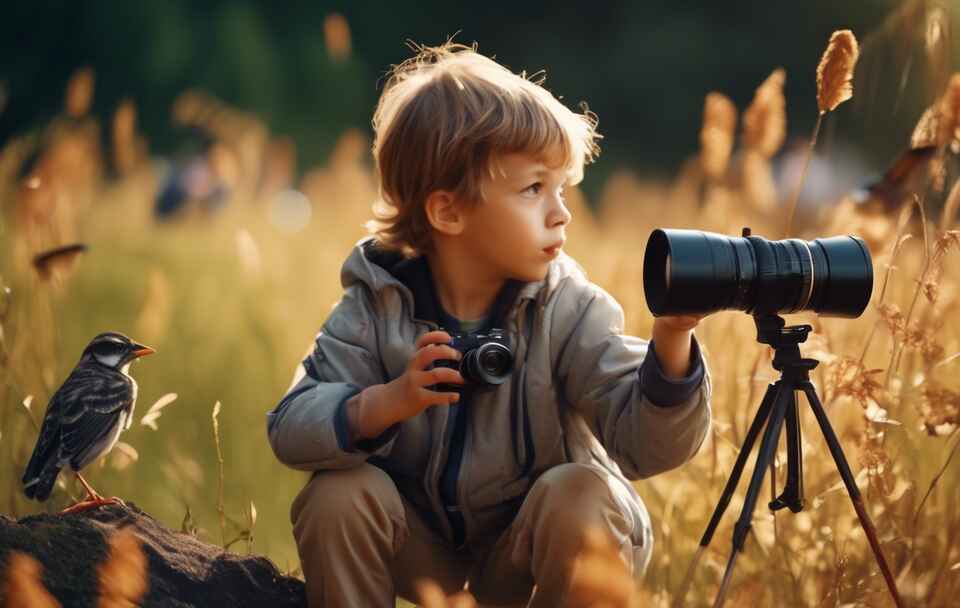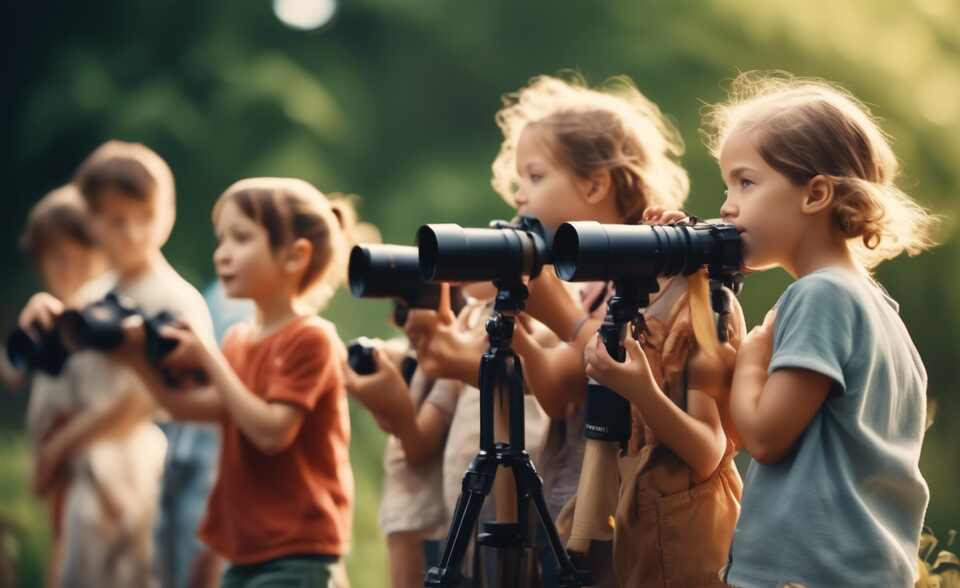Bird watching is an exciting and educational hobby that can spark a lifelong love for nature in children. This comprehensive guide will provide kids with all the essential knowledge and skills they need to become successful young birders. From identifying different species to understanding bird behavior, we’ll cover everything a beginner needs to know to get started on this fascinating journey.
Table of Contents
- 1 Why Bird Watching is Great for Kids
- 2 Getting Started: Essential Bird Watching Equipment
- 3 Basic Bird Identification Skills
- 4 Where to Go Bird Watching
- 5 Creating a Bird-Friendly Backyard
- 6 Bird Watching Etiquette and Safety
- 7 Fun Bird Watching Activities for Kids
- 8 Common Birds to Look for in North America
- 9 Seasonal Bird Watching
- 10 Advanced Bird Watching Skills
- 11 Technology and Bird Watching
- 12 Overcoming Common Challenges
- 13 Conservation and Bird Watching
- 14 Conclusion: A Lifelong Adventure
- 15 Author
Why Bird Watching is Great for Kids
Bird watching offers numerous benefits for children:
- Connects them with nature: In our increasingly digital world, bird watching encourages kids to spend time outdoors and appreciate the natural environment.
- Develops observation skills: Spotting and identifying birds hones a child’s ability to pay attention to detail and make careful observations.
- Encourages patience and focus: Waiting quietly for birds to appear helps kids develop patience and concentration.
- Promotes physical activity: Bird watching often involves walking and exploring, providing gentle exercise.
- Fosters environmental awareness: Learning about birds and their habitats can instill a sense of environmental stewardship in children.
- Builds scientific thinking: Observing and recording bird behavior introduces kids to basic scientific methods.
Getting Started: Essential Bird Watching Equipment
Before heading out on your first bird watching adventure, it’s important to have the right gear. Here’s a list of essential equipment for young birders:
- Binoculars: A good pair of binoculars is crucial for getting a closer look at birds. Look for kid-friendly models that are lightweight and easy to handle.
- Field Guide: A bird identification guide specific to your region will help you identify the species you spot. Choose one with clear pictures and simple descriptions.
- Notebook and Pencil: Encourage kids to keep a birding journal to record their observations and sketches.
- Comfortable Clothing: Dress in layers and wear comfortable, weather-appropriate clothing. Earth-toned colors are best to avoid startling birds.
- Hat and Sunscreen: Protect against sun exposure during outdoor adventures.
- Water Bottle: Stay hydrated during your birding trips.
- Snacks: Pack some healthy, energy-boosting snacks for longer outings.
- Optional: Camera: A simple point-and-shoot camera or smartphone can be used to document sightings.
Basic Bird Identification Skills
Learning to identify birds is a key part of bird watching. Here are some tips to help kids get started:
The Four Keys to Bird Identification
- Size and Shape: Is the bird small like a sparrow or large like a crow? Is it plump or slender? Does it have a long neck or short legs?
- Color Pattern: What are the main colors of the bird? Are there any distinctive markings like stripes or spots?
- Behavior: How does the bird move? Does it hop on the ground, wade in water, or soar in the sky?
- Habitat: Where did you see the bird? Different species prefer different environments like forests, wetlands, or open fields.
Using Mnemonic Devices for Bird Calls
Many birds have distinctive calls that can be remembered using fun phrases. Here are a few examples:
- American Robin: “Cheer up, cheerily, cheer up, cheerily”
- Black-capped Chickadee: “Chick-a-dee-dee-dee”
- Eastern Towhee: “Drink your tea!”
- Barred Owl: “Who cooks for you? Who cooks for you-all?”
Encourage kids to create their own mnemonics for bird calls they hear often.
Where to Go Bird Watching
Bird watching can be done almost anywhere, but some locations are particularly good for beginners:
- Your Backyard or Local Park: Start close to home where you can observe common birds regularly.
- Nature Centers: Many nature centers have bird feeding stations and guided walks for beginners.
- Wildlife Refuges: These protected areas often have a diverse range of bird species.
- Wetlands and Lakes: Water birds are often easier to spot and observe.
- Forests and Woodlands: Great for spotting a variety of songbirds.
Remember to always respect nature and follow any rules or guidelines in the areas you visit.
Creating a Bird-Friendly Backyard
Attracting birds to your own backyard can provide endless opportunities for observation. Here are some tips to make your yard more appealing to birds:
- Install Bird Feeders: Offer a variety of seeds to attract different species. Some popular options include:
- Black oil sunflower seeds (attracts many species)
- Nyjer seeds (for finches)
- Suet (for woodpeckers and nuthatches)
- Provide Water: A simple birdbath can attract many birds, especially in hot weather.
- Plant Native Species: Choose plants that provide natural food sources and shelter for local birds.
- Create Shelter: Leave some areas of your yard “messy” with fallen leaves and branches for birds to use as shelter.
- Avoid Pesticides: These can be harmful to birds and reduce their insect food sources.
Bird Watching Etiquette and Safety
Teaching kids proper bird watching etiquette is crucial for both their safety and the well-being of the birds:
- Observe from a Distance: Use binoculars to get a closer look without disturbing the birds.
- Be Quiet: Speak softly and move slowly to avoid startling birds.
- Leave No Trace: Don’t litter or disturb the natural environment.
- Respect Nesting Areas: Keep a safe distance from nests to avoid stressing parent birds.
- Follow Local Rules: Obey all signs and regulations in parks and nature reserves.
- Stay Safe: Always bird watch with an adult, stay on marked trails, and be aware of your surroundings.
Fun Bird Watching Activities for Kids
Keep young birders engaged with these fun activities:
- Bird Bingo: Create bingo cards with common local birds and mark them off as you spot them.
- Bird Photography: Encourage kids to take photos of birds they see (without disturbing them).
- Bird Feeder Crafts: Make simple bird feeders out of pinecones, peanut butter, and seeds.
- Bird Mapping: Create a map of your yard or local park, marking where different birds are spotted.
- Bird-inspired Art: Draw or paint the birds you’ve seen or create collages using feathers (found, not plucked!).
- Bird Song Karaoke: Learn to mimic bird calls and have contests to see who can do the best imitations.
Common Birds to Look for in North America
Here’s a table of some common birds that kids might spot in North America, along with key identifying features:
| Bird Species | Size | Key Features | Habitat |
|---|---|---|---|
| American Robin | 10 inches | Red breast, gray back, yellow bill | Lawns, parks, forests |
| Blue Jay | 11 inches | Blue with white and black markings, loud call | Forests, backyards |
| Northern Cardinal | 9 inches | Bright red (male), reddish-brown (female), distinctive crest | Shrubby areas, backyards |
| Black-capped Chickadee | 5 inches | Black cap and bib, white cheeks, small size | Forests, parks, backyards |
| American Goldfinch | 5 inches | Bright yellow with black wings (male in summer) | Fields, gardens, backyard feeders |
| Red-winged Blackbird | 9 inches | Black with red and yellow shoulder patches (male) | Wetlands, marshes, fields |
| Downy Woodpecker | 6 inches | Small, black and white woodpecker with red spot on head (male) | Forests, parks, backyards |
| Mallard Duck | 24 inches | Green head (male), brown speckled (female), blue wing patch | Ponds, lakes, rivers |
Seasonal Bird Watching
Different seasons bring different bird watching opportunities:
Spring
- Many birds return from migration
- Breeding season begins
- Look for colorful plumage and listen for mating calls
Summer
- Peak time for observing nesting behavior
- Many young birds learning to fly
- Early morning is the best time for bird watching
Fall
- Migration season begins
- Watch for large flocks of birds moving south
- Some birds may change to duller winter plumage
Winter
- Fewer species, but easier to spot against bare trees
- Great time to observe winter residents and visitors from the north
- Bird feeders become especially important
Advanced Bird Watching Skills
As kids become more experienced, they can start developing these advanced skills:
- Learning Bird Behavior: Start recognizing different behaviors like foraging, preening, or courtship displays.
- Understanding Bird Anatomy: Learn the different parts of a bird to help with more detailed identification.
- Recognizing Flight Patterns: Different bird groups have distinctive ways of flying, which can aid in identification.
- Using Field Marks: Learn to spot subtle differences like wing bars, eye rings, or bill shapes.
- Keeping a Life List: Start a record of all the different bird species seen over time.
- Participating in Citizen Science: Join projects like the Christmas Bird Count or eBird to contribute to real scientific research.
Technology and Bird Watching
While traditional methods are great, technology can enhance the bird watching experience:
- Bird Identification Apps: Apps like Merlin Bird ID or Audubon Bird Guide can help with quick identifications.
- eBird: This online platform allows birders to record their sightings and explore data from around the world.
- Bird Call Apps: Some apps can play bird calls to help with identification (use sparingly to avoid disturbing birds).
- Online Communities: Join kid-friendly birding forums or social media groups to share experiences and learn from others.
Overcoming Common Challenges
Even experienced birders face challenges. Here are some tips for common issues:
- Bird Flew Away Too Fast: Practice quick observation skills and try to remember key features to look up later.
- Can’t Find the Bird in the Field Guide: Start with the basics like size and color, then narrow down based on habitat and behavior.
- All the Birds Look the Same: Focus on one group of birds at a time (e.g., waterfowl or woodpeckers) to learn their distinctive features.
- Binoculars Are Hard to Use: Practice focusing on stationary objects first, then gradually move to moving targets.
- Bird Watching Seems Boring: Try setting challenges like a species scavenger hunt or competing to spot the most birds in an hour.
Conservation and Bird Watching
Bird watching can be a gateway to understanding broader environmental issues:
- Habitat Loss: Learn how urbanization and deforestation affect bird populations.
- Climate Change: Observe how changing weather patterns impact migration and breeding.
- Pollution: Understand the effects of pesticides and plastics on birds and their habitats.
- Conservation Success Stories: Learn about species that have recovered due to conservation efforts, like the Bald Eagle.
Encourage kids to think about how they can help protect birds and their habitats.
Conclusion: A Lifelong Adventure
Bird watching is a hobby that can grow with a child, providing endless opportunities for learning and discovery. By starting with the basics and gradually building skills, young birders can develop a passion that lasts a lifetime. Remember, the most important thing is to have fun and appreciate the incredible diversity of our feathered friends.
So grab your binoculars, head outside, and see what wonders you can discover in the world of birds!






